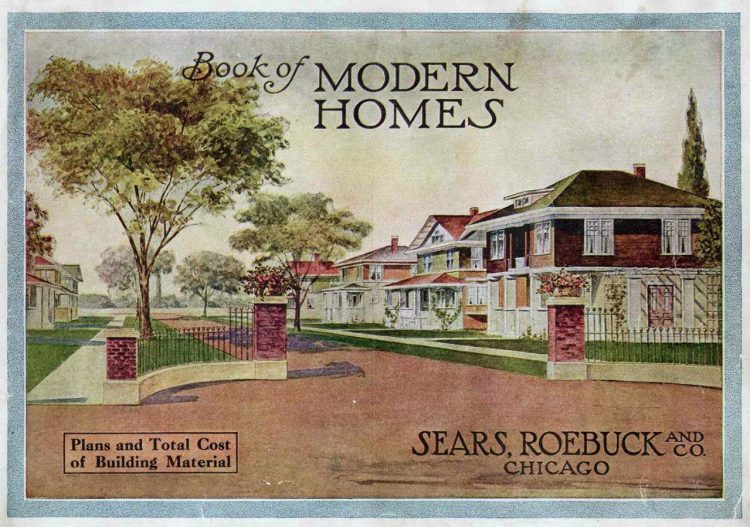Not too long ago we came across a twitter thread from Louis Hyman, the Associate Professor of History & Director, Institute for Workplace Studies in New York City. This is in light of the 125-year-old American Staple Sears recently filing for Bankruptcy.
There’s hidden Black history here, so check out his twitter thread below:
In my history of consumption class, I teach about #Sears, but what most people don’t know is just how radical the catalogue was in the era of #Jim Crow. #twitterstorians
— Louis Hyman (@louishyman) October 15, 2018
Every time a black southerner went to the local store they were confronted with forced deference to white customers who would be served first.
— Louis Hyman (@louishyman) October 15, 2018
And the store would be filled with racist caricatures of black people in an effort to sell to white people. pic.twitter.com/ylpMNjnITo
— Louis Hyman (@louishyman) October 15, 2018
The stores were not self-service, so the black customers would have to wait. And then would have to ask the proprietor to give them goods (often on credit because…sharecropping). The landlord often owned the store. In every way shopping reinforced hierarchy. Until #Sears
— Louis Hyman (@louishyman) October 15, 2018
The catalog undid the power of the storekeeper, and by extension the landlord. Black families could buy without asking permission. Without waiting. Without being watched. With national (cheap) prices!
— Louis Hyman (@louishyman) October 15, 2018
Southern storekeepers fought back. They organized catalogue bonfires in the street.
— Louis Hyman (@louishyman) October 15, 2018
These general stores often doubled as post offices. The owners would refuse to sell stamps to black people, or money orders, to use the catalogue services.
— Louis Hyman (@louishyman) October 15, 2018
Happened enough that sears instructed customers to evade the postmaster and directly speak to the mail carrier:
“just give the letter and the money to the mail carrier and he will get the money order at the post office and mail it in the letter for you.” pic.twitter.com/iegVjvvvR3— Louis Hyman (@louishyman) October 15, 2018
In an attempt to undermine #Sears, rumors spread that Sears was black (to get white customers to stop buying from him). Sold by mail “these fellows could not afford to show their faces as retailers”
Sears, in turn, published photos to “prove” he was white.— Louis Hyman (@louishyman) October 15, 2018
These rumors didn’t affect sales but show how race and commerce connected in the countryside. And how dangerous it was to the local order, to white supremacy, to have national markets.
— Louis Hyman (@louishyman) October 15, 2018
So as we think about #Sears today, let’s think about how retail is not just about buying things, but part of a larger system of power. Every act of power contains the opportunity, and the means, for resistance.
— Louis Hyman (@louishyman) October 15, 2018
Then there’s this video below that Louis Hyman referenced that speaks on the history of Capitalism (and White Supremacy).
[embedyt] https://www.youtube.com/watch?v=RpROUjHSijg[/embedyt]
#HiddenBlackHistory


https://bjdkgfsfhidhgvudbfjeguehfwhsfug.com
Mkfdkfjwsldjeifgheifnkehgjr
vndkfhsjfodkfc;sjgjdgokrpgkrp
bndljgoedghoekfpegorig
fihfowhfiehfoejogtjrir
Yndkfvhdjkfhke nkfnslkfn klfnklf
Oljgvkdfkndjvbgdjffsjdnkjdhf
Nkfhofjeojfoegoero ogeoegfeougeihigoohge igjeigheiogheiogheih giehdgoiehifoehgioheighe hfioeehfieohgeiodgnei hioehgioehfdkhgioehgi eodghioedhgieghiehgeuo
Nihdigheifjojfieui iihfishfiwsfhiwhfowhfh hfsdfhkdcndjkfhe klchsiofhwifhdvjdnj hkfhsfhifheuhguegheflkhe
Yfhsfheifhei hfhdfiehfiejfk fjeogjeogj ojgoedjodjvsclksfhszghLhekjb; ;dh jdjvndkjdfjsofjsofjosjfi fojsjdoskfsjfodgjdsghoi sdjfpfgspegjsodjvdhvgisd
Mfjefjojgidhvshg ihidhgiodhgirhgir hioihgdioghrigrigh ihgiogherihgirodvdks jsdjfsopejfovgjdksjosj joesjfoesjfsj;ifsjg
Ndjsfhjifekfhekdghior highdiofhidogheioghei gijhgoiehgiehgieh jfiheigheihgioe